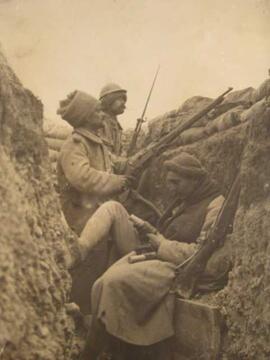US MILITARY INTELLIGENCE REPORTS ON JAPAN, 1918-1941
- MF463-MF493
- Collection
- 1918-1941
US Military Intelligence Reports: Japan, 1918-1941 is a themed microfilm collection relating to US Military Intelligence Division (MID) in Japan, 1918- 1941. Included in the collection are microfilmed copies of US MID reports from the military attaché and his staff, and correspondence and telegrams between the military attaché, his staff, US Army Headquarters and the Japanese Imperial Army Headquarters, and US and foreign diplomats throughout the Far East. These documents have been arranged into eight sections: general conditions, political conditions, economic conditions, general conditions in Korea, army, field artillery, navy, and aviation. These sections are not mutually exclusive and all include a range of routine and special reports. Reports on domestic policy cover the rise of right wing, socialist, and communist organisations in Japan; the effects of the 1923 earthquake; Japanese industrial expansion, notably the securing of raw materials from neighbouring countries; the South Manchurian Railway Company; oil prospecting; and the iron and steel industries. Military and foreign policy reports concern the occupation of Korea, Siberia, Manchuria (Manchukuo), and the 1919 independence demonstrations in Korea. Specific military reports cover Japanese military tactics; military regulations; combat principles; training; organisation, the social attitude of officers; civil-military relations; aviation technology and statistics; the annual budgets of the Japanese War Ministry; naval building programmes; the scrapping of warships in accordance with the Washington Naval Treaty of 1922; naval operations in World War One; the use of air power against China; and the construction of offensive airfields in Indo-China.


